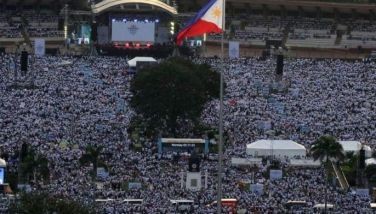Perpetrated

One theory about the horrible killings of civilians in the Kyiv suburb of Bucha were done by badly disciplined Russian troops to take revenge for their horrible losses. The alternative, more gut wrenching, theory is better supported by evidence: that the killings were perpetrated as part of Russian strategy.
German audio intercepts, shared with parliamentarians and reported by Der Spiegel, indicates Russian troops were under orders to kill civilians. There are also indications at least some of the killings were done by the notorious Wagner group of Russian mercenaries. The high level of civilian casualties resulting from the Russian invasion of Ukraine is likely intrinsic to the aggressor’s military strategy.
Ukrainian president Volodymyr Zelensky is asking the world to brace for even more horrific images of Russian brutality. Even more victims, he says, have been found in the town of Borodyanka.
One could only imagine the scale of such killings in heavily besieged cities like Mariupol. It was reported that the invading Russian army brought in mobile crematoriums into the devastated city, very likely to hide evidence of an intolerable civilian toll.
Pope Francis offered prayers for the suffering people of Ukraine. He was holding a tattered Ukrainian flag from the town of Bucha to call the world’s attention to the atrocities happening.
The UN General Assembly this week voted Russia out of the organization’s human rights council. It would be entirely anachronistic to allow Russia to continue to be represented there. The Philippines was one of 90 countries voting to expel Russia.
The scale of atrocities against civilians committed by Putin’s army is consistent with the pattern we saw in Chechnya and in Syria. Inflicting brutality against civilian populations appears to be integral to Russian military tactics. If this is so, there will be even more chilling reportage of atrocities committed by Russian troops.
In his remarks, Pope Francis questioned the ability of existing international agencies to protect populations from brutality inflicted by aggressors. That echoes Zelensky’s complaint about the inadequacy of agencies like the UN and NATO in protecting his people. This is a matter we will continue to examine for years to come.
The UN has been loud in its condemnation of Russian aggression. The NATO has been rushing military supplies to help Ukraine’s valiant army. But no one is ready to agree that the support has been adequate.
The international agencies that are supposed to guarantee the protection of entire populations seem stymied by the thought the madman at the Kremlin could escalate the conflict to involve the use of nuclear arms.
Steady
Most of us are happy the Comelec seems to have adopted a strictly businesslike demeanor in managing the forthcoming elections. The poll body has stood above the partisan fray and demonstrated efficiency in preparing the voting process, including printing nearly all the ballots to be used next month.
The steady management of the elections process and the ability to hold controversies at bay took years to achieve. Much has to do with the general credibility of the automated elections process we have adopted for several cycles now.
During the bad old days of manual counting, there were too many opportunities for mishaps to occur. During those days, the Comelec had a dismal trust rating of only 40 percent.
After the first automated poll in 2010, the Comelec’s trust rating leapt to 74 percent. In a 2019 report, Pulse Asia found that 84 percent of voters trusted the election results, 94 percent said the vote counting machines were easy to use and 91 percent wanted automated voting in future elections. This was a vote of confidence in both the Comelec and the Automated Election System (AES) it oversaw.
The poll body is fully aware the AES is prone to intrigue and scandal mongering. For this reason, great care has been put in preparing the source code on which this the whole system runs.
The source code is accredited by an international certifying entity and reviewed by local experts and political parties. After being turned over to the Comelec, the source code is placed in the custody of the Bangko Sentral where it is kept under lock and key until the poll body is ready to install it. There is an unbroken chain of custody over the source code, wholly controlled by the poll body.
Automating our voting system reduced incidence of election-related violence. In 2010, 176 election-related violence was reported – the number a significant drop from the averages during the days of manual counting. In 2016, the number dropped further to 106. In 2019, the PNP reported 43 cases of election-related violence.
The market appreciates the reliability and efficiency of the AES. After the 2010 elections, our stock market posted a 3.85 percent gain while the peso rose 1 percent against the dollar. In the wake of the 2016 presidential elections, the market rose 3.09 percent.
The AES is also an auditable system. The Philippine Statistics Authority conducted random manual audits of the 2019 elections and found a remarkable 99.9953 percent match between the manual and automated counts. Since 2010, the accuracy of the AES never fell below 99 percent.
It has been said that no one loses in a Philippine election. Either the candidates win or they claim to have been cheated. That dysfunction is bound to continue this time around and the AES will again be subjected to very close scrutiny.
It helps that both the Comelec and the AES have a strong record to stand on.
- Latest
- Trending



























